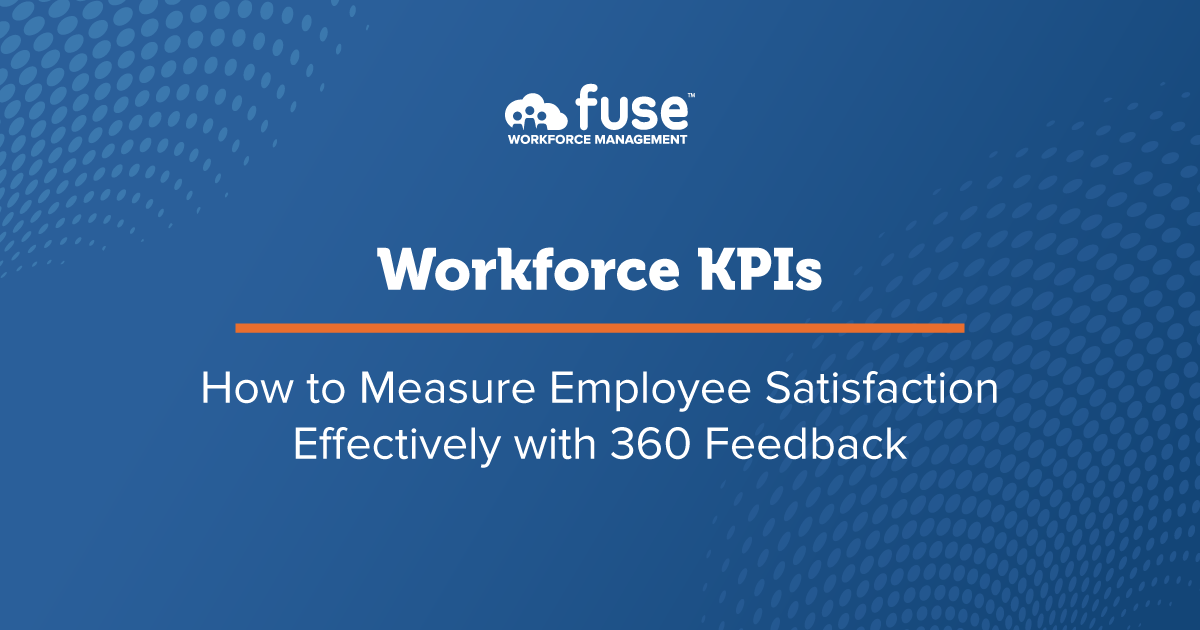Understanding employee satisfaction is essential for today’s economy where we have people coming and going all the time. Managing employee turnover is a priority task for most human resource teams. Keeping the employees that you have is a lot less expensive than going out and trying to get new ones. Employee satisfaction plays a huge role in whether workers choose to stay or go. But how to measure employee satisfaction is an ongoing concern.
Is it possible to know if your employees are really satisfied? Yes, it is possible! One way to measure employee satisfaction is to get employees to share their opinions using tools like surveys and 360 reviews.
How Can You Measure Employee Satisfaction?
Employee satisfaction measures how engaged and happy employees are at work. It’s one of the key performance indicators that HR teams should be monitoring since it affects many aspects of a business.
One of the most straightforward ways to measure job satisfaction is to simply ask – and ask regularly. While being asked to provide an opinion can improve employee engagement, the further a company can go, the better. This information can help employees grow and advance during their employee lifecycle with your company – but only if your company acts on what it learns.
It’s easy to see how asking employees for feedback may present daunting challenges. Small companies may struggle with providing employee anonymity while large-scale companies may be challenged to effectively communicate at scale. However, with well-designed employee feedback tools in your HR toolkit, you can meet that challenge easily, and even automate the process.

Using Employee Surveys
Surveys are a time-tested method to get feedback and are an excellent way to start understanding what employees are thinking. They're a good way to continually get information from employees about how satisfied they are with their work environment and how content they are with their roles and responsibilities within the organization.
Surveys can be provided to employees in a physical format because they’re inherently simple, helpful tools. Using brief surveys tightly focused on a few specific questions, you can learn where employees stand in a consistent way that is easy to report.
On the very simple survey side, some companies ask employees to provide an employee net promoter score, or eNPS, several times a year. This single-question survey provides a 0-10 scale and asks, “How likely are you to recommend working here to a friend or family member?” The responses are broken down into categories: promoters who score 9-10 and detractors who score 0-6; other scores are not counted in the eNPS. To get the eNPS, you’ll deduct the percent of detractors from the percent of promoters. This provides a good snapshot of employee satisfaction, the results of which can inform your next steps.
Surveys are relatively easy to roll out and excel at providing an accessible employee satisfaction measurement scale. However, they can’t provide the reasons behind the answers, which are where the greatest opportunities are.
Using 360 Reviews
Another way to get employee feedback is by creating a 360 review that’s focused on your company’s performance in the eyes of your employees. This process is more intensive but it will help explore an employee’s complex experiences and capture their feelings more thoroughly. This holistic process can provide incredible opportunities for companies willing to make meaningful changes to improve employee satisfaction.
The 360 review is a type of peer feedback that is similar to a performance review. It’s much deeper than a survey and provides an evaluation of skills, performance, competencies, strengths, and weaknesses. This thorough perspective comes from people who regularly work with or collaborate with the subject of the review, like coworkers, teammates, managers, or direct reports. The identity of participants is not revealed to the person receiving feedback, which encourages honest responses.
Most often, the results are used in concert with annual reviews to help individual employees advance. However, the 360 review process is a powerful tool that can help a company improve its policies or create a better working environment. Questions take a variety of forms, from rating scales to written responses, depending on the information being sought. The requests can be broad or narrow, like evaluating a subject's work ethic or a manager's managerial skills.
The 360 review provides an account of what other employees think of the subject of the review – in this case, your company. Having employees review the company in this way is helpful because if employees aren't satisfied, they're going to leave. This can lead to a high turnover rate, which causes a lot of problems and expenses. And even if they don’t leave, a disgruntled workforce doesn’t create the best environment for achieving good work.
Responses provide a company with data it can use to make changes to culture, work environment, pay, or benefits with the ultimate goal of employee retention.
Using Fuse Workforce to Gather Feedback
Often companies will request this kind of feedback for individuals at the same time they conduct a performance review or employee evaluations, so these tools are found with other talent management tools in the Fuse Workforce system.
The Fuse team will collaborate with you to do the initial build and then teach your team how to use and manage it. You’ll learn how to use the tool, how to view associated reports, and how to assign feedback requests. The system is very user-friendly. Many of our customers feel comfortable enough in the system to build out their own 360s, so we’ll teach your team how to make changes so you can modify questions or build out a completely new review. It’s easy to accomplish.
Fuse’s 360 tool is very configurable. Built based on the questions your company wants to ask, it can help a company uncover what its employees think about their work. When the build-out is complete, human resources can go into the system and assign a 360 to review a colleague, manager, or even the company at large. Employees would be selected to provide feedback and receive a notification on how to access the review and instructions on how to complete it. You can have employees review the company, their manager, or other team members – whatever best supports your goals. And, of course, responses can be set to be completely anonymous and accessible only to those with specific permission levels, like the human resources team.

Creating 360 Review Reports With Fuse
You can create comprehensive reports using Fuse to share the information you’ve gathered. They contain information about the status of feedback – whether it’s completed or not completed – allowing you to track what still needs to be done, their timeframes, and where it might be stuck in the workflow. You’ll also see the responses generated by those who have completed the review. The data export is variable, and you can easily add information into the reports. Reports can be viewed, sorted, and edited in any spreadsheet program.
What Kind of Actions Might Follow a 360 Review?
Inviting real and pure feedback may provide surprises to company leadership, both bad and good. Ideally, the feedback will drive some kind of meaningful change that positively impacts its employees and makes the working environment better for everyone.
If feedback indicates that employees are dissatisfied, a company might choose to radically change the work environment based on what’s been shared. For example, feedback from an anonymous 360 review may alert leadership about a manager who regularly ignores policy, and then the company might need to create an improvement plan or replace that manager. On a warmer note, if multiple peers are discussing a particular teammate in a positive manner, the company may respond with formal recognition, promotion, or raise. If the company gets feedback from a team candidly sharing that they're critically overworked and don't have the capacity to meet their goals, the company may choose to add people to that team or adjust its goals. Employees might point out that the company’s DEI goals and hiring practices don’t seem to be in alignment, which might spark conversations about how to diversify staff makeup. If communication is a constant theme, investing in a company-wide communication training program could improve the situation.
The goal of exploring and understanding employee satisfaction is to ensure that the work environment is one that inspires employees to stay. Satisfied employees contribute to a more positive overall work atmosphere, which is good for the entire company. Understanding your employees' opinions of their work and workplace can improve engagement, increase efficiencies, foster a friendlier environment, and keep your employees working with you.

